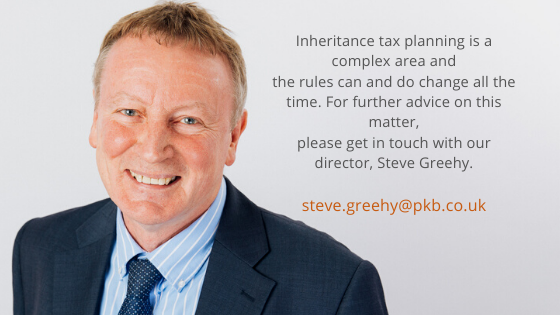According to new government figures, a record number of estates paid inheritance tax in 2016/17.
A 15% rise compared to the previous year’s figure of 24,500, the data shows that more than 28,100 estates were liable for death duties in 2016/17. This continues the trend of year-on-year increases since records began in 2009/10.
The average tax on an estate during this time period was £179,000. What’s more, the proportion of estates liable to inheritance tax increased from 4.2% in 2015/16 to 4.6% in 2016/17.
Total duties raised from inheritance tax also reached a new record of £5.4 billion during 2018/19, which represents a 3% rise compared to the previous year.
The nil-rate band has remained frozen at £325,000 since 2009/10, with tax deducted at 40% on the part of an estate that exceeds this threshold. Because the nil-rate band hasn’t been adjusted in line with inflation, more estates are falling into the inheritance tax net.
The residence nil-rate band can increase this threshold to £475,000 in 2019/20 if a family home is left to any children or grandchildren.
Changes to inheritance tax could well be afoot however, with Chancellor Sajid Javid admitting that reforming the system is on his mind.
Speaking at an event staged by the Institute of Economic Affairs and the Taxpayers’ Alliance, Javid was asked if he would get rid of inheritance tax. He replied:
“We’ve already made some sensible reforms to that tax, but I understand the arguments against it. When people pay taxes already through work or investments, capital gains or other taxes, there’s a real issue with then asking them to pay taxes all over again.
He continued:
“Sensible changes have already been made but it’s something that’s on my mind.”
The Office for Tax Simplification has recommended reducing the current seven-year period at which tax may be due on gifts to five years, replacing various gift exemptions with a single allowance, and implementing a digital system.
Planning for inheritance tax
HMRC collected a record £5.1bn from inheritance tax in the year ending May 2017. Combined with the fact that the threshold at which inheritance tax is payable has been frozen since 2010, it means that an increasing number of families face a hefty tax bill when a loved one dies.
The number of families paying inheritance tax did in fact increase by a whopping 160% between 2010 and 2016 – highlighting the importance of planning your estate.
Inheritance tax is paid at a rate of 40% of the value of an estate above £325,000. This increases to £650,000 if you’re married or widowed.
Your estate includes the value of your home minus your mortgage and other possessions such as artwork, jewellery, your car and other possessions.
In April 2017, an additional main residence nil-rate band allowance was phased in. It’s currently worth £150,000 but will eventually rise to £175,000 per person by April 2020.
Please be aware however that not everyone can benefit from this allowance. You can only use it if you’re passing your home to your children, grandchildren or any other lineal descendant. If you don’t have any direct descendants, you won’t qualify.
How can I reduce my inheritance tax liability?
Whether you qualify for the family home allowance or not, there are a number of ways you can reduce your inheritance tax liability.
You can for example give away up to £3,000 each tax year (£6,000 for couples). You can also give as many gifts of up to £250 per person as you want in any tax year. You cannot however give the £250 gifts to anyone you’ve already given your £3,000 allowance to.
You can find out more about inheritance tax gift rules in our news story.
To read news and blogs from Steve Greehy, click here >>


